A single-day Tour down in the Brecks and Thetford Forest today. After heavy rain overnight again, it was a rather cloudy day but thankfully it remained dry and we did even have some brief sunny spells during the morning.
We met this morning in the car park at Lynford Arboretum. A few Hawfinches have been coming down to feed in front of the gate there in recent days, so we walked over the road to have a look first. Despite the new green plastic sheet strung across the tree tunnel behind the pond, obscuring the view, we could still see there were plenty of birds coming down to the seed – including at least 20 Bramblings, with some of the males already starting to get their summer black heads, several Yellowhammers and a couple of Nuthatches. We stood and watched the comings and goings for a while, admiring the variation in the Bramblings and listening for any sign of the Hawfinches in the trees above.
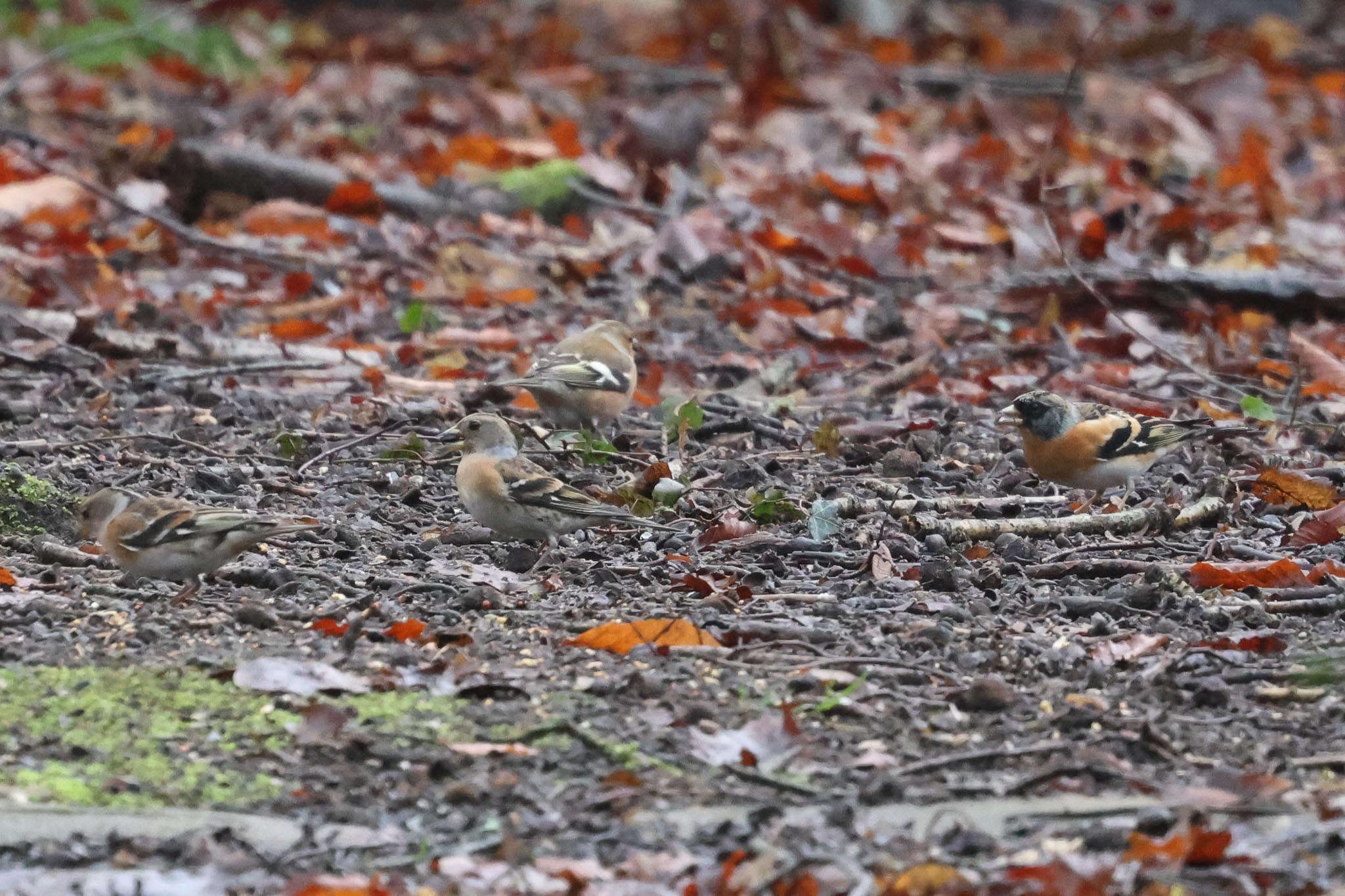
The clouds appeared to be breaking and a few rays of morning sunshine broke through. We walked a bit further down to see if there were any birds sunning themselves in the tops of the trees. At first, we could just see several of the Bramblings up in the branches but we didn’t have to wait too long before a Hawfinch flew in and landed above them, followed by a second which dropped in a little lower down. We were looking into the sun from here, so we moved a bit further still and looked back, where we had a much better view. They were two female Hawfinches, rather grey-brown with a less extensive black mask and bib. After a while, they dropped down through the branches – a good start to get them under our belts first thing. A Great Spotted Woodpecker was calling from the top of a tree in the Arboretum.
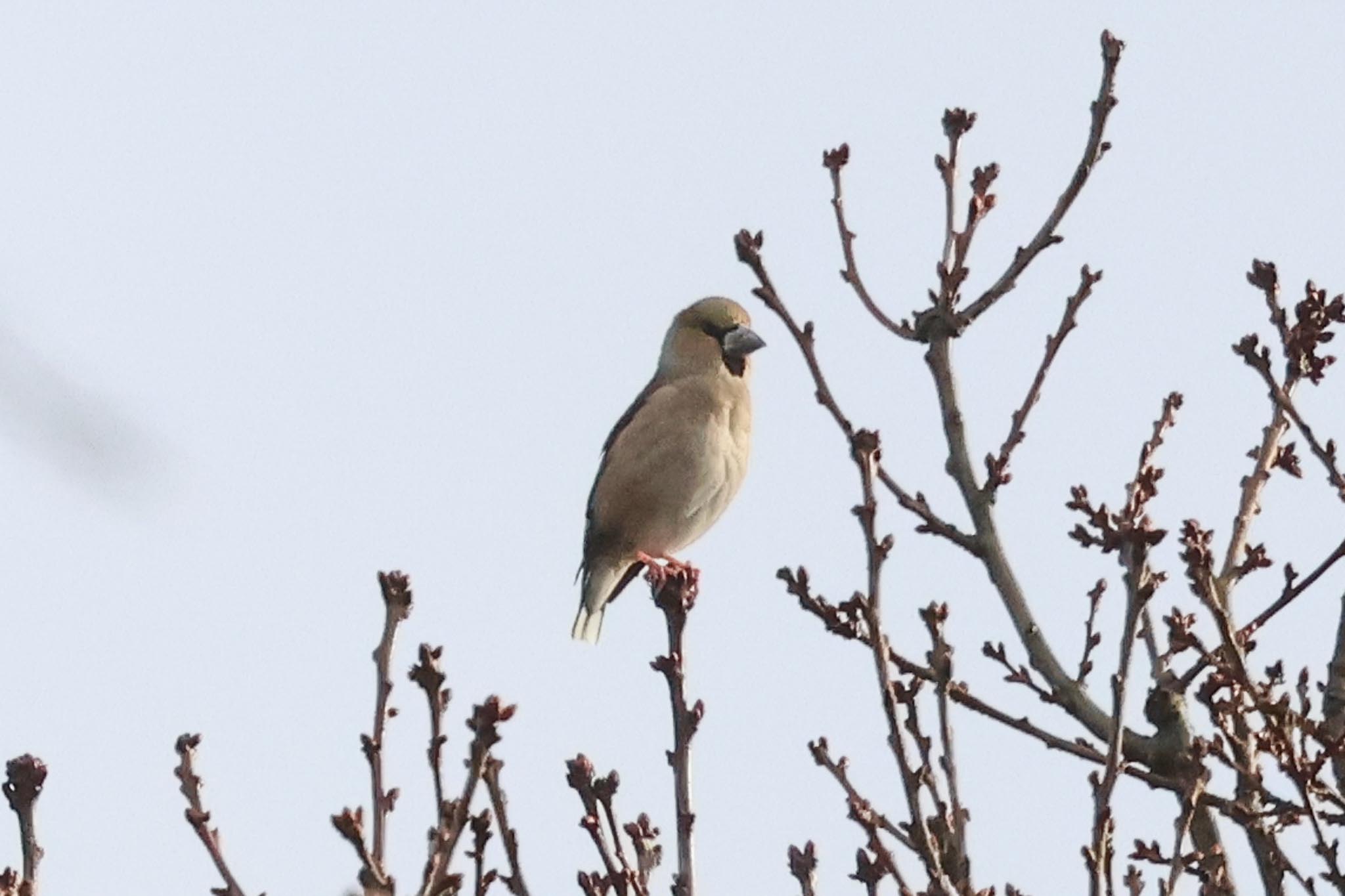
We decided to try to make the most of the morning brightness to see if we could find any Woodlarks singing. It was a short drive round to a nearby clearing. As we walked in through the trees, a large group of Redwings was chattering and singing further down and from the other side we could see several of them perched in the bare branches. A Song Thrush was singing above us too.
As we walked along the track around the edge of the clearing, a pair of Woodlarks flew up from the middle. One dropped down again over the far side but the second landed on a side branch of a tall tree stump which had been left nearby. We got it in the scope and could see its well marked supercilium. When it dropped down to the ground, we walked on a bit, stopping again for another look when if flew back up. It dropped down again and we continued on to the track through the middle of the clearing. We thought we might be able to find the Woodlarks on the ground from there, but they are so well camouflaged and they had probably moved considerably now from where we saw them drop. Despite the rays of sunshine through the clouds, the male was not really singing this morning and only when we were just about to leave did we hear it start to sing quietly from somewhere further back.
We made our way out onto another track which led back to the road and as we walked along we kept scanning the trees. We hadn’t gone far when this paid off in the shape of a male Common Crossbill perched in the very top of a fir tree. We got it in the scope, but unfortunately it dropped down before everyone had a chance for a closer look.
Continuing on, we had a brief glimpse of a pale raptor through the trees back beyond where we had parked and when we got back to the minibus we looked across to see an adult male Goshawk flying over. It turned and flew back the other way, then turned away again, although only very briefly did it engage in any display – just a quick burst of slow flapping – before it disappeared back over the trees beyond. We were planning to head off elsewhere to look for Goshawks now, thinking there might be some activity as the sun broke through the clouds, but it was nice to see one here already.
A Marsh Tit appeared in the bushes just across the road from where we were parked and, as we were just about to get back into the minibus, a Woodlark started singing a little further up the road. We walked up to listen to its slightly melancholy song, such a typical sound of late winter/early spring in the forest clearings here, and it came fluttering high over over the road and over our heads.
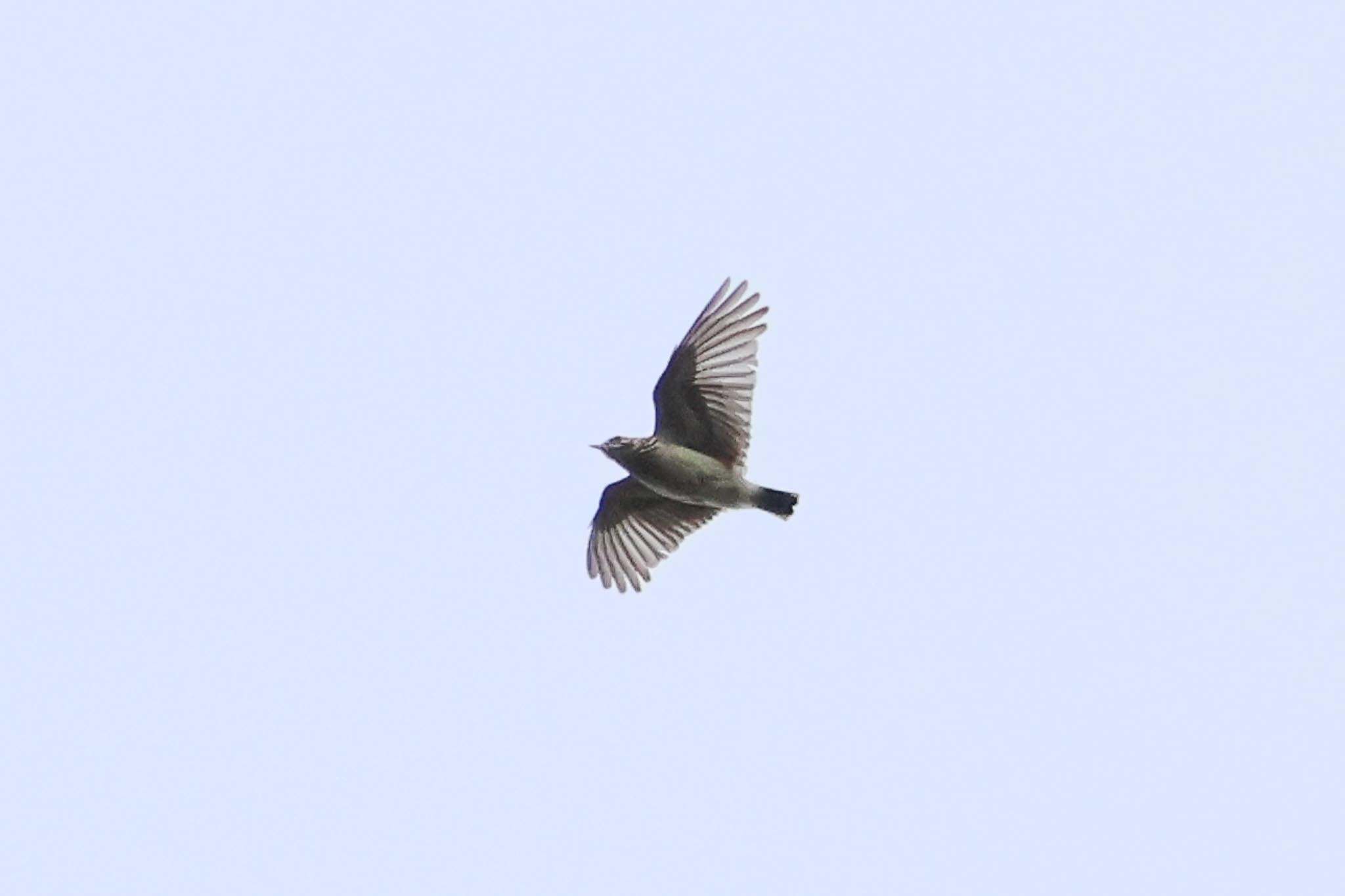
Sticking to plan A, we drove north to see if we could see any more Goshawks but quickly found ourselves heading back into thicker cloud. On the way, we pulled up to scan an overgrown field which was full of Fieldfares, along with a few Redwings, Chaffinches and Skylarks and a couple of Red-legged Partridges. When we got to the usual spot on the high ground looking over the forest it was very grey and felt rather cold as we got out of the minibus, not ideal conditions for displaying Goshawks.
We didn’t have to wait long before all the Woodpigeons erupted from the trees away to our left and we looked across to see a large female Goshawk flying out over the fields. It flew up through the belt of pines the other side, sending more Woodpigeons scattering, before it came out above the trees. It was rather brown and streaked below, a juvenile from last year. Then it dropped down into the trees and disappeared.
There were several Common Buzzards which circled up above the trees and one or two came right over where we were standing. A Red Kite drifted over the field away to our right and then another four Red Kites circled over the trees off to our left. The bigger surprise was three Marsh Harriers which circled up together with a Common Buzzard, before drifting off NE, not a regular bird to see here.
When all the pigeons started to come up out of the trees to our right, another Goshawk appeared briefly flying through the tops, before dropping away from us and out of view. Then the juvenile female we had seen earlier came up again from the pines behind us and circled up, lingering in the same place long enough for us to get it in the scopes this time. With the stubborn cloud, it seemed unlikely the Goshawks would be displaying today, so we decided to move on before we got too cold.
We stopped again by a small field planted with a wild bird seed mix. As we got out of the minibus, several Reed Buntings were perched in the hedge and small groups of Yellowhammers flew in and out of the crop. From the edge of the field, we looked up along the hedge and could see a few Tree Sparrows perched in the brambles. The more we stood and watched, the more appeared – at one point we counted up to twenty Tree Sparrows in the same view. A sadly very scarce and declining species here these days, it was a real treat to watch them.
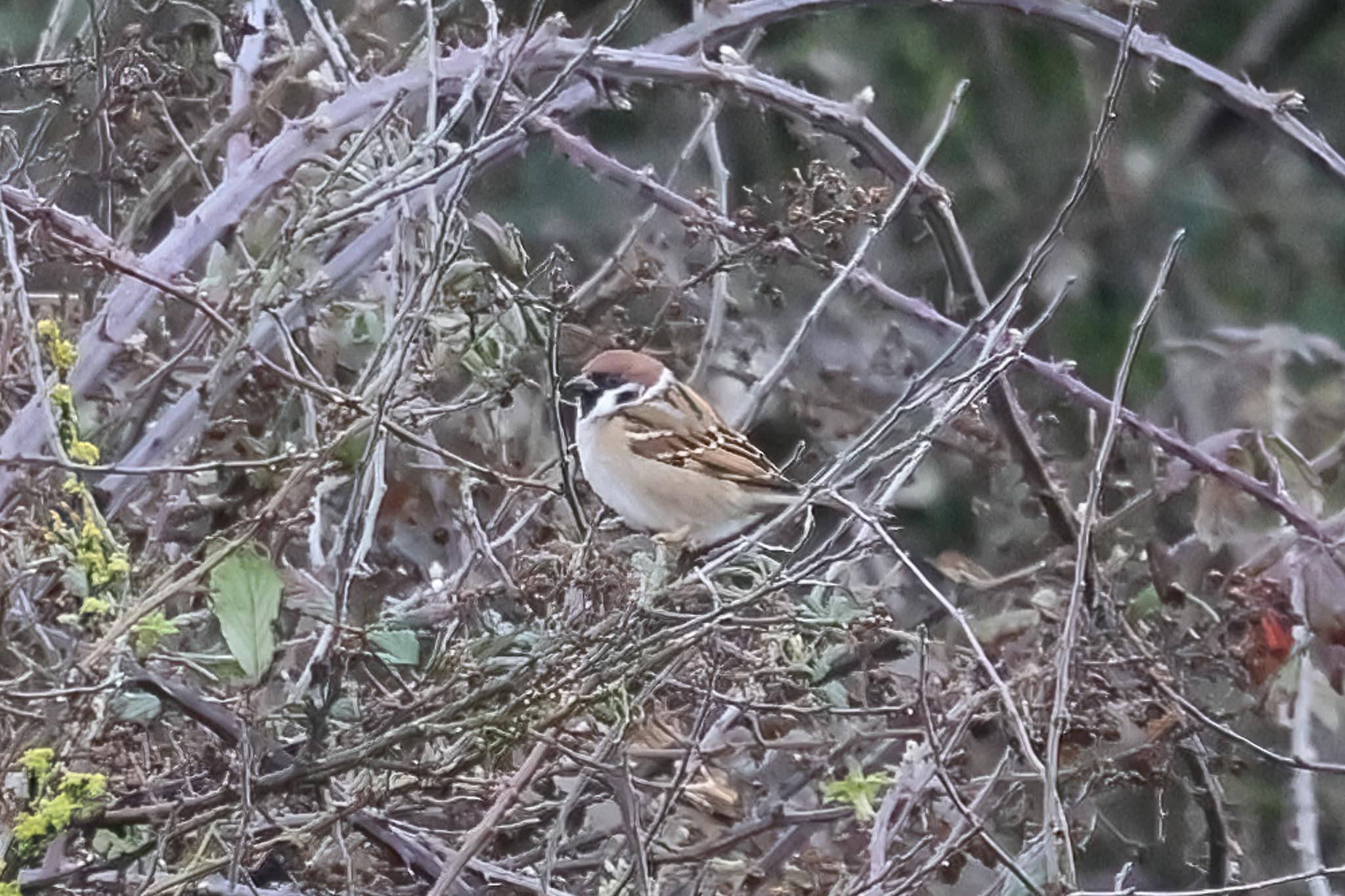
It was just about lunchtime now, so we drove south again, down to Brandon Country Park, to make use of the facilities there. As we ate on the picnic tables, several Coal Tits came in and out of the feeders. A Brambling perched in the top of the taller trees behind the cafe briefly and a Sparrowhawk flew over, before folding its wings back and plummeting dramatically down into the forest just behind the car park.
After lunch, we had a quick look at the small lake. As expected at this time of year, there were several Mandarins on the water. We counted at least five drakes and two females, though there were probably more hiding in the reeds. A Moorhen was lurking on the edge of the vegetation. We had a quick scan of the trees around the lake, but there was very little activity here, so we decided to move on.
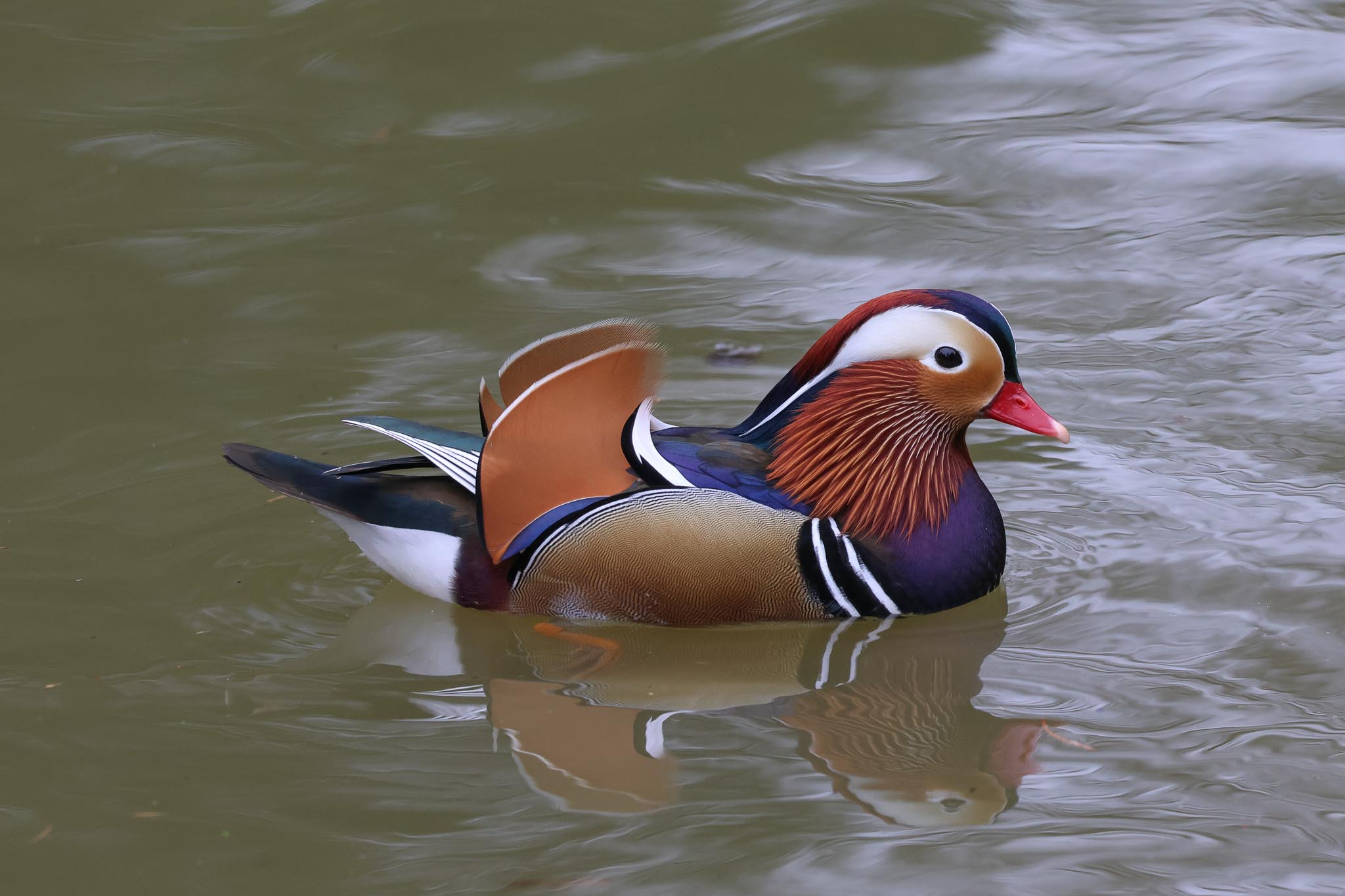
Our next destination was Santon Downham, where we parked in the Forestry Commission car park. A Treecreeper was singing in the trees as we got out of the minibus and several Redwings were perched in the top of a nearby bush. There were lots of Siskins in the trees in the back gardens of the cottages and a couple of Bramblings. A Lesser Redpoll flew up into one of the trees just as the homeowner came out to her back gate with her dog, and everything flew off.
Out onto the road, we stopped to look at the feeders in the front garden of one of the cottages. There were more Siskins here and we were quickly rewarded with another Lesser Redpoll which flew in too, a smart male with bright red breast as well as the red ‘poll’. A succession of Lesser Redpolls came in to the feeders while we stood there, with at least three birds in total. Several Coal Tits appeared too and a Marsh Tit made a brief visit. A couple of Great Spotted Woodpeckers landed in the top of one the taller trees further back. We had a quick look from the bridge. More finches were coming and going from the feeders down by the river, including more Lesser Redpolls.

We planned to finish the day back at Lynford Arboretum, so we headed back round there now. The car park was very busy but we managed to find somewhere to park and most people seemed to be here for coffee at the Shepherd’s Baa. We walked past and on up to the gate, where one person was standing watching the birds coming down to feed. He told us the Hawfinches had been down earlier, although not for a while.
We hadn’t been there long before one of the group standing by the far end of the gate realised that there was a Hawfinch down feeding, but behind the green plastic sheet. The bottom corner of the sheet was missing and from time to time the Hawfinch hopped to where it was just visible from the right spot, a smart male. Thankfully, the birds all kept spooking and flying up into the trees before dropping down again, and the Hawfinches were doing the same, and sometimes coming down on our side of the sheet. We had lovely views of both male and female now, with the male at one point hopping out to the small pond for a drink.

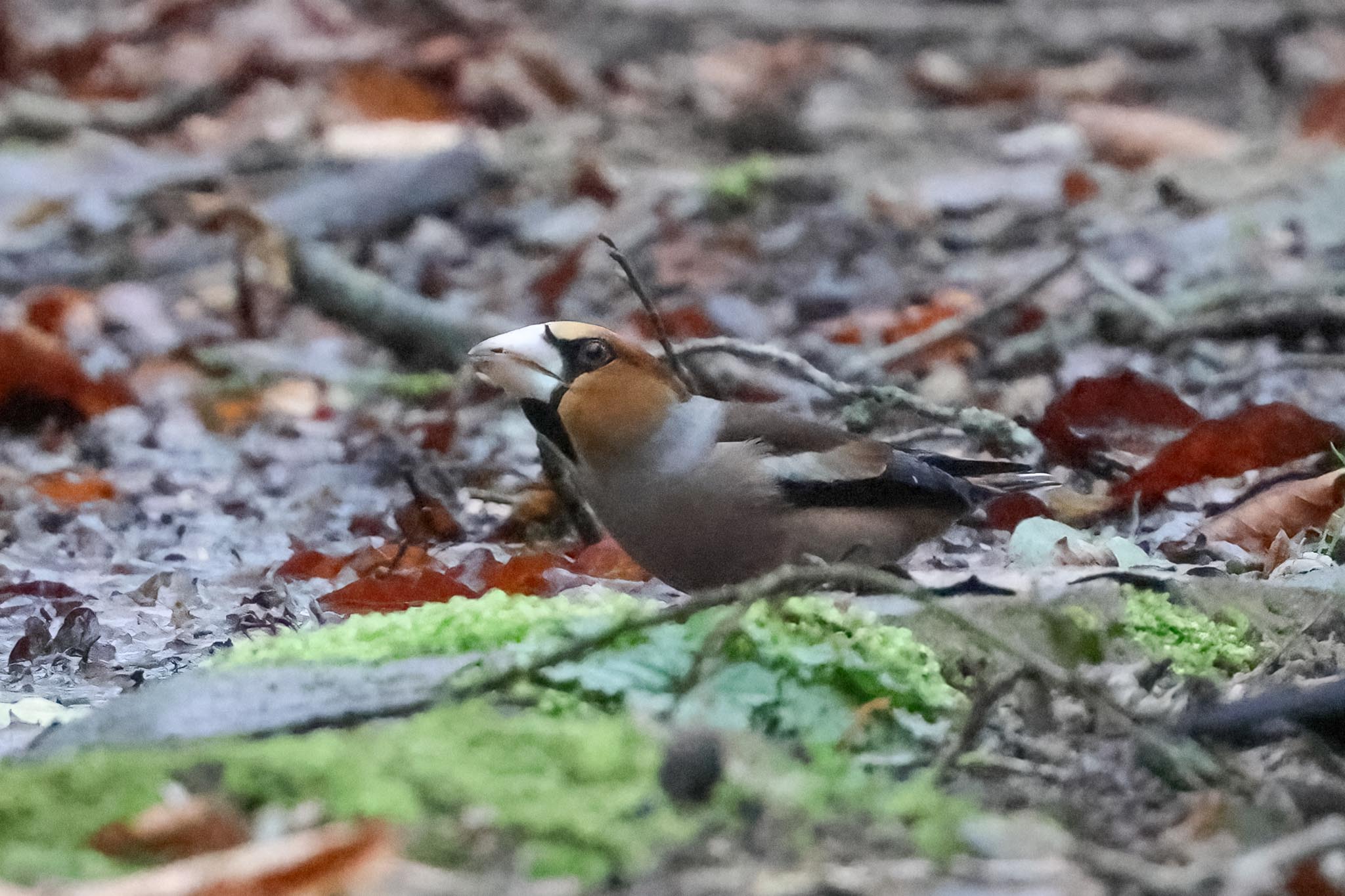
After a while, we had to tear ourselves away and continue on down to the paddocks. We stopped at the bridge where the feeders had been filled up since this morning. We had nice views of a Treecreeper in the trees here, although as usual it spent most of its time round the back of the trunks. There were plenty of Blue Tits, Great Tits and a couple of Coal Tits coming in and out, but no sign of any Marsh Tits while we were here today. Several Siskins were feeding on the alder cones.

From the edge of the paddocks, we could see a couple of Greenfinches in the top of the first of the hornbeams and as we got the scopes on them, three Hawfinches hopped up into view too. One flew out and over our heads, landing in the top of the poplars behind us, before all three then flew into one the other hornbeams further along. A ‘big ole thrush’ was perched in the same tree, local vernacular for a Mistle Thrush!
Walking on, there were lots of finches flying in and out of the trees, Chaffinches, Greenfinches, Goldfinches and Siskins. The Hawfinches flew up into the tops of the firs beyond where they perched for a while before dropping down to roost. We did a circuit of the paddocks and pack down to the path alongside the lake. A large flock of Siskins was still feeding feverishly in the alders here, at least a hundred of them, which was great to watch. Several Gadwall were out on the water but we couldn’t find any Canada Geese at first. Disappointment for all the group was averted however, as only when we walked further along did we find a pair of Canada Geese hidden behind the trees on one of the islands with a Mute Swan. A Little Grebe was laughing at us from somewhere deep in the reeds.
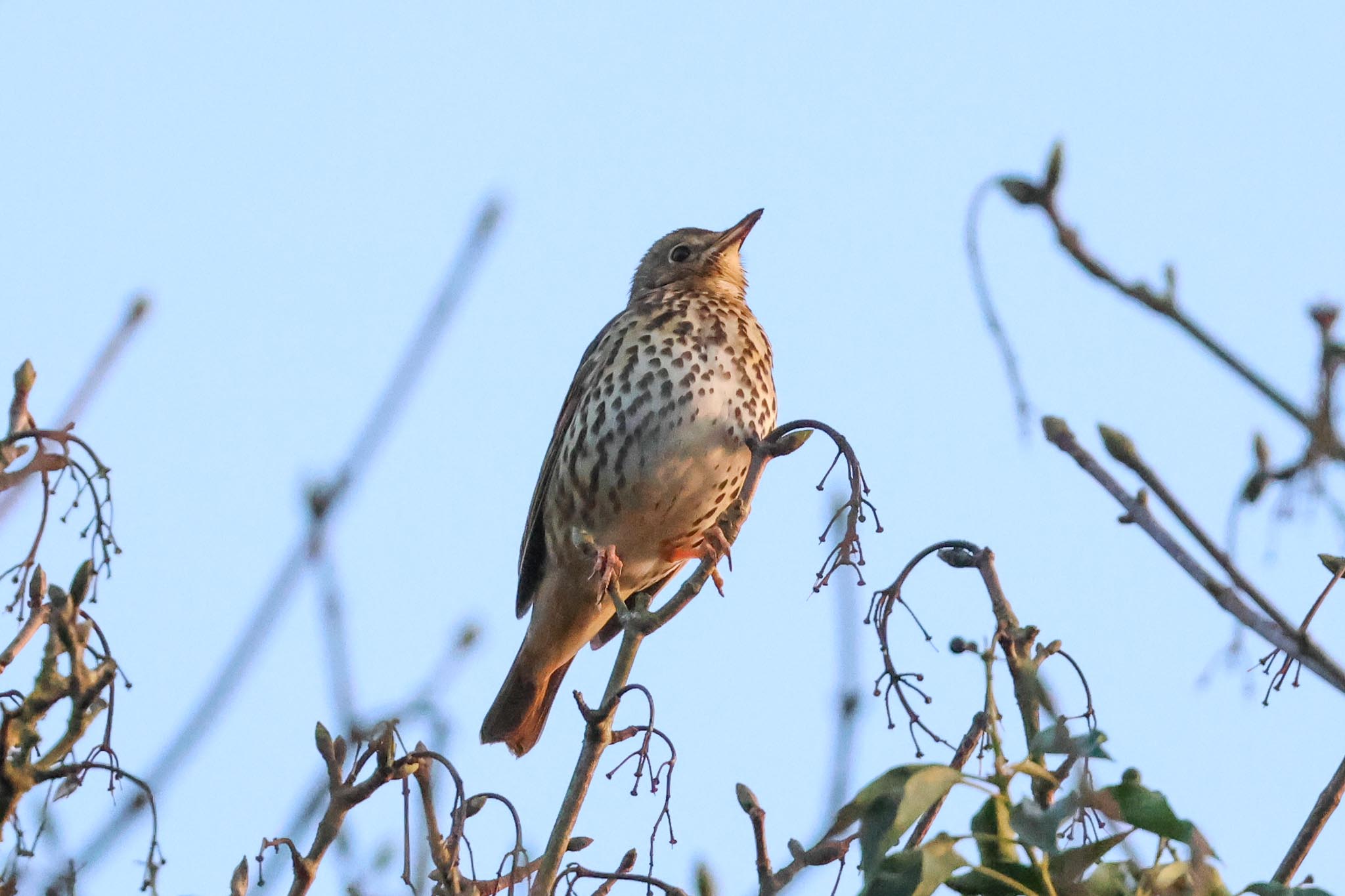
We stopped again at the bridge – the Treecreeper was still in the trees there, along with a Great Spotted Woodpecker, and a Nuthatch came in to the feeders briefly. As we walked back up towards the car park, a Song Thrush was singing its heart out in a tree above the path. The ground in front of the gate was quiet now as we passed, with the birds mostly having headed off to roost already. It was time for us to head off too.
















